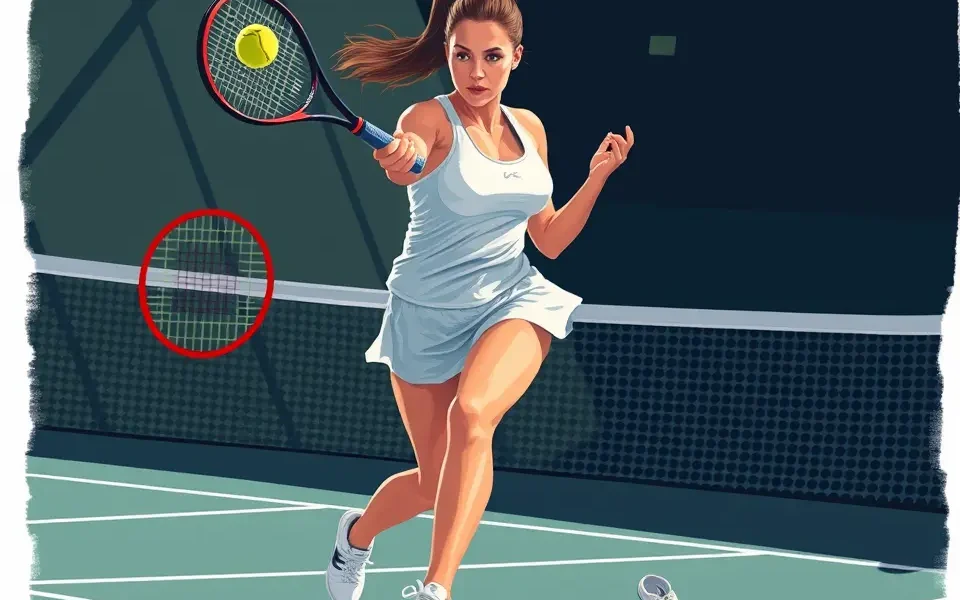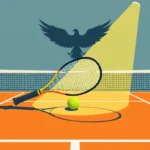Iga Swiatek, the world No. 1 in women’s tennis, is no stranger to criticism. While she’s celebrated for her dominance, particularly on clay, one aspect of her game consistently draws scrutiny: her forehand. This article delves into the critiques of Swiatek’s forehand, exploring the reasons behind the concerns and whether they are justified.
The Criticism: A Deep Dive
The main criticisms of Swiatek’s forehand revolve around its:
- Inconsistency: Especially in high-pressure situations or when rushed, the shot can break down and lead to numerous errors.
- Defensive Weakness: Her extreme Western grip, while generating impressive spin, can be a liability when defending against fast, deep shots.
- Over-reliance on Spin: A tendency to brush up the back of the ball excessively can lead to shanks and poor contact.
Examples in Matches
Several matches highlight these issues. One such instance was her loss to Elina Svitolina at Wimbledon in 2023, where Swiatek committed a staggering 57 forehand errors. Similarly, in a match against Yulia Putintseva, Swiatek’s forehand performance was significantly inferior, with 19 winners and 46 errors, compared to Putintseva’s 11 winners and 16 errors.
These matches underscore the vulnerability of Swiatek’s forehand when she doesn’t have ample time to prepare or is forced into defensive positions.
The Technical Aspects
Experts point to several technical elements that contribute to the forehand’s perceived weaknesses:
Extreme Western Grip
Swiatek employs an extreme Western grip, which allows her to generate tremendous topspin. However, this grip also has drawbacks:
- Difficulty with Low Balls: It can be challenging to hit low balls effectively, requiring significant adjustments and potentially leading to errors.
- Vulnerability on Fast Surfaces: On faster surfaces where the ball doesn’t bounce as high, the extreme grip can be a hindrance.
- Blocking Difficulties: Her grip makes it harder to block the ball effectively when in trouble, especially on faster surfaces.
Swing Mechanics
Swiatek’s forehand swing also comes under scrutiny:
- Too Much Wrist and Whip: The excessive wrist action in her swing can make it difficult to control the shot, especially when defending.
- Lack of Variation: She seems to have only one speed on her forehand, making it difficult to adapt to different situations.
- Elbow Position: During the take-back, her elbow is tucked close to her body, which some analysts believe can cause players to hit the ball too close to their body.
Counterarguments: Why It Works For Swiatek
Despite the criticisms, Swiatek’s forehand is a key component of her success. Several factors explain why it works for her:
Spin Generation
Her extreme Western grip allows her to generate massive topspin, making her shots difficult to handle, especially on clay.
Aggressive Baseliner
Swiatek is an aggressive baseliner who dictates play with her powerful groundstrokes. When she has time to set up, her forehand can be a potent weapon.
Ability to Flatten Out the Shot
Despite her emphasis on spin, Swiatek can also flatten out her forehand when necessary, adding versatility to her game.
Overall Success
Ultimately, Swiatek’s results speak for themselves. She has won multiple Grand Slam titles and held the world No. 1 ranking for a significant period. It’s hard to argue with that kind of success, regardless of any perceived weaknesses in her forehand.
Expert Opinions
Opinions on Swiatek’s forehand are divided. Some coaches and analysts believe that her technique is fundamentally sound and that the criticisms are overblown. Others acknowledge the weaknesses but emphasize that they are outweighed by the shot’s strengths.
- Pete from Crunch Time Coaching notes the massive topspin Swiatek generates, which is a significant asset on clay courts.
- However, GEM Tennis Coaching advises against copying Swiatek’s forehand, citing the extreme Western grip and specific swing mechanics that may not be suitable for all players.
Swiatek’s Response to Criticism
Swiatek is aware of the criticism surrounding her forehand and has worked to address its weaknesses. She has focused on improving her defensive skills and adding more variation to her shots.
In March 2025, Swiatek responded to criticism about her on-court behavior and emotions, highlighting the challenges of dealing with constant judgment. She emphasized that she is working to find a balance between expressing herself and maintaining control.
Comparisons to Other Players
Comparing Swiatek’s forehand to those of other top players can provide additional insights. While some players, like Serena Williams or Maria Sharapova, have more powerful and consistent forehands, Swiatek’s spin-heavy approach is unique and effective in its own way.
Ultimately, the effectiveness of a particular forehand technique depends on the individual player’s strengths, weaknesses, and playing style.
The Future of Swiatek’s Forehand
As Swiatek continues to evolve as a player, it will be interesting to see how her forehand develops. Will she continue to refine her existing technique, or will she make more significant changes to address its weaknesses?
Regardless, one thing is certain: Swiatek’s forehand will remain a topic of discussion and analysis for years to come.
Conclusion
Iga Swiatek’s forehand is a complex and often misunderstood aspect of her game. While it has clear weaknesses, particularly in defensive situations, it is also a potent weapon that has contributed to her success. The criticisms of her forehand are not without merit, but they should be viewed in the context of her overall game and achievements. Whether it’s a liability or a strength, Swiatek’s forehand is undeniably a defining characteristic of one of the most dominant players in women’s tennis.








No Comment! Be the first one.